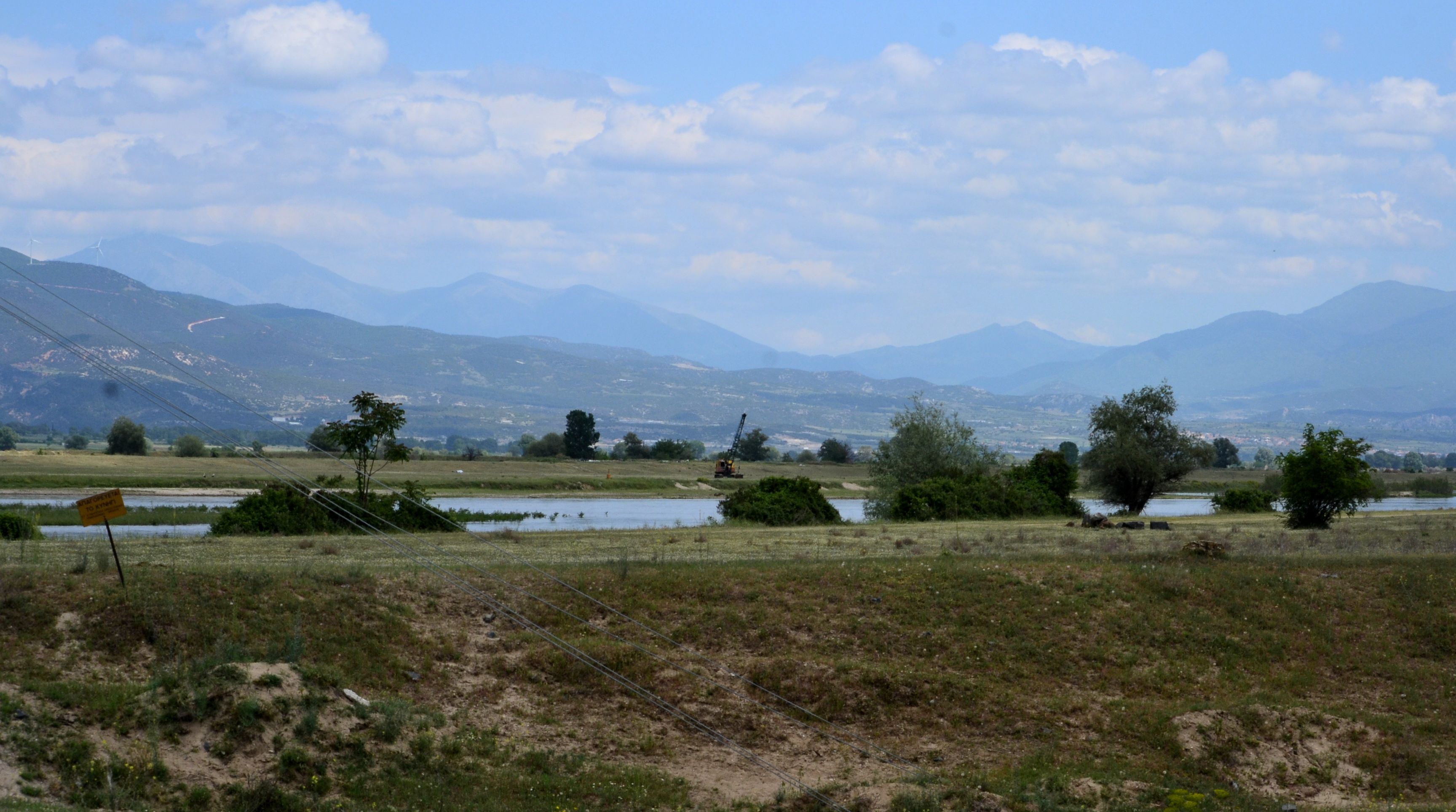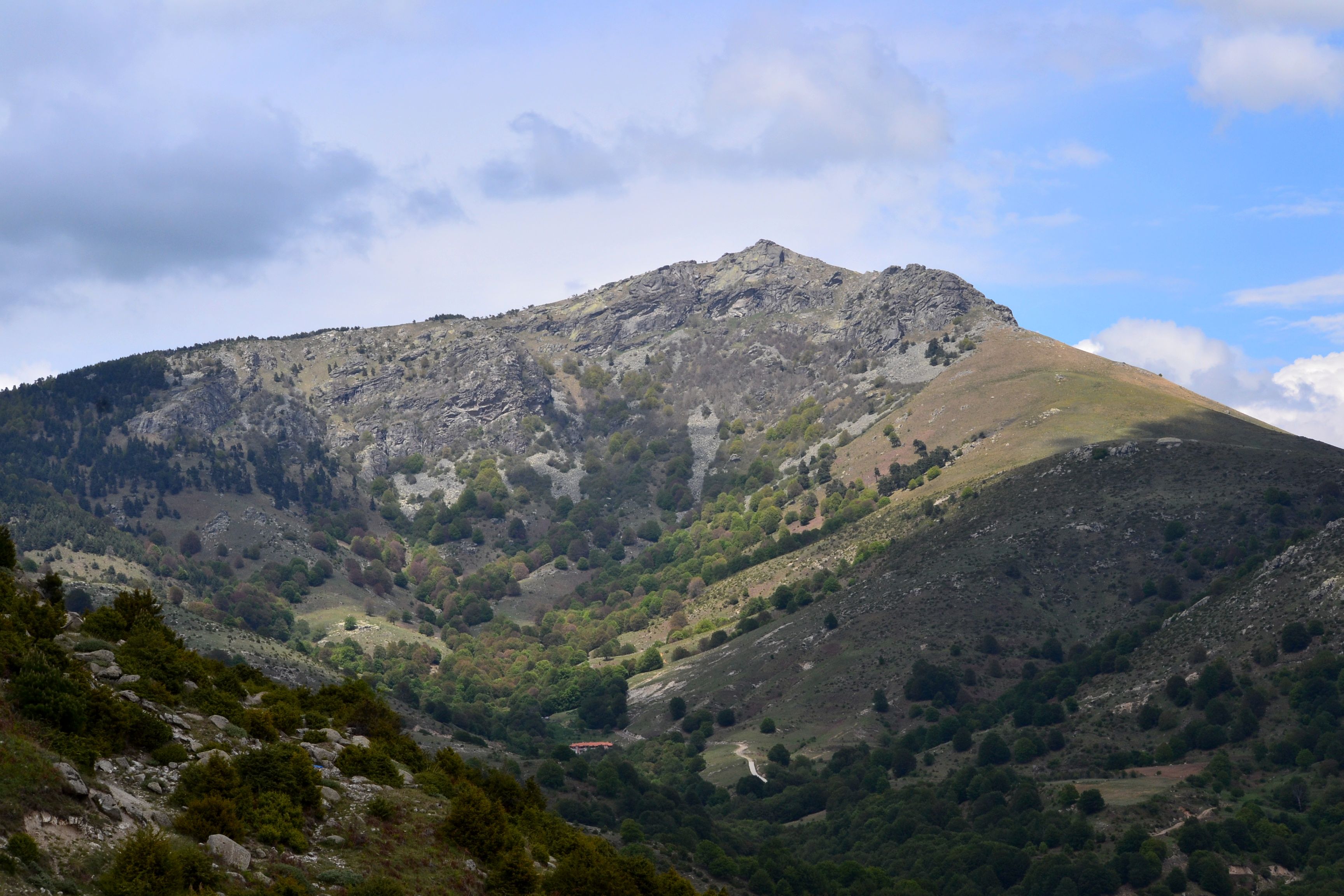This is by any standards a beautiful place. From my window I could see the mountain tops along which runs the border between the Greek region of Macedonia and Bulgaria. Below them is tucked the Ramsar designated wetland of Lake Kerkini that is famed amongst birders for it’s breeding populations of Dalmatian Pelican and Pygmy Cormorant, transient White Pelican and for hosting most of the European population of Lesser White-fronted Geese in winter. I have come here with the wildlife tour operator Naturetrek in search of more bird life list additions, and to sample this region’s butterflies and dragonflies.
As the northern landscape in Estonia last month was dour, samey and, well northern so this southern spot on my 2017 birding agenda is a rich and scenic patchwork of farms, fields and settlements. Tourists who come to Macedonia other than wildlife enthusiasts are mostly Greek city dwellers with a mind for rural tranquillity in summer. And there is plenty of that to be enjoyed here. The pace of life is gentle, the roads lightly trafficked to say the least, and I didn’t set eyes on a McDonalds or Costa all week.
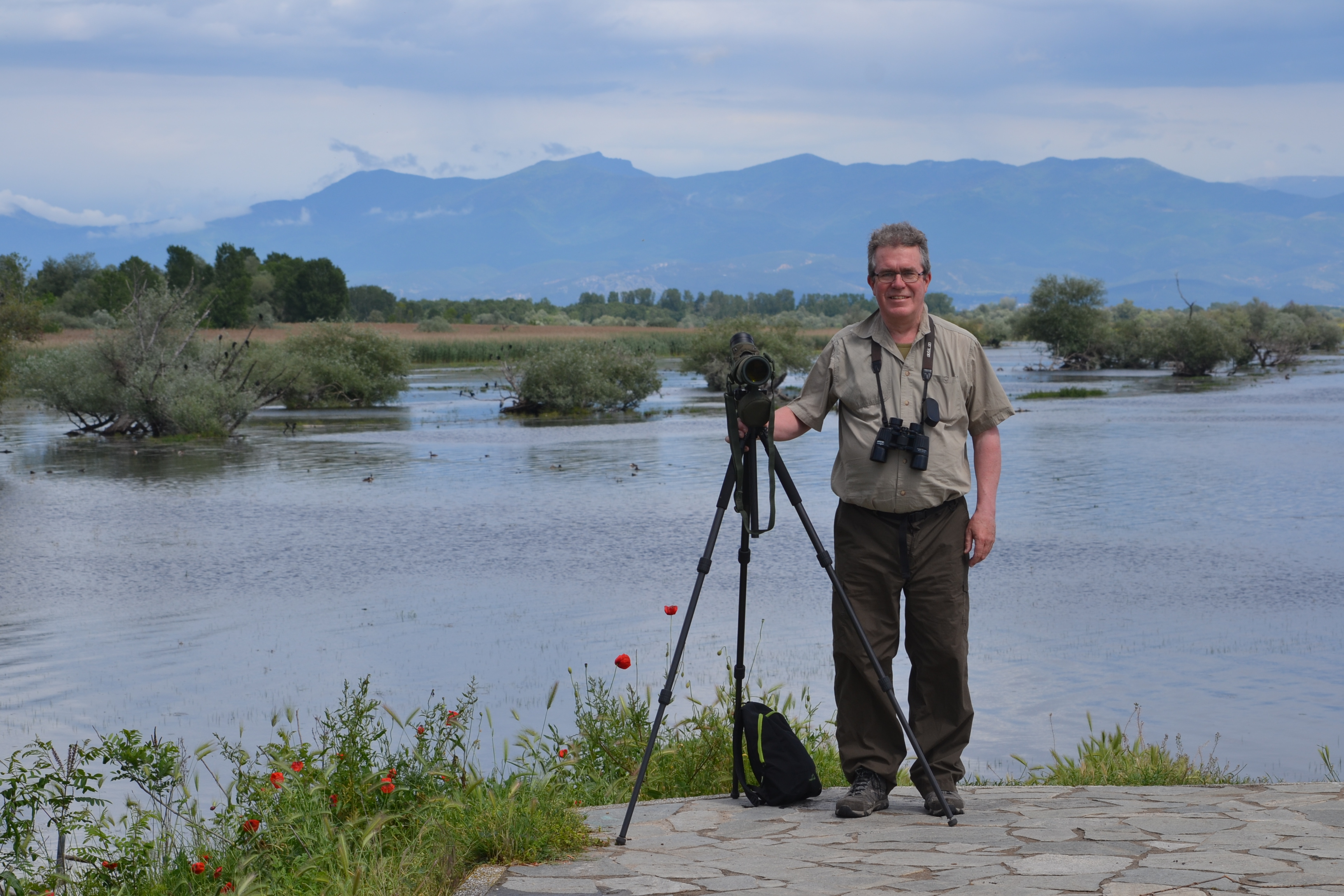
Yours truly: “So the story goes, this is a tale that must be told *”
In recent years when birding abroad solo in Cyprus and Portugal I stayed in mass market hotels then hired a car to get out to where the wildlife is. Our base for seven days here is the private Limneo Guest House in the village of Hrisochorafa, just to the east of the lake. Catering for the needs of visiting bird tours is amongst our host Nikos Gallios’ eco-tourism interests. He is well known in the Greek birding community so has the local bird knowledge with which to brief tour leaders. He also knows all the taverna owners around the village’s main square and hence arranged an authentic range of evening meals for us.
This is only the second time that Naturetrek has visited Kerkini in spring, the first occasion being a few years ago. The tour was researched by our leader Phil Thompson who knows the area intimately. I have been wanting to visit Macedonia for some time and this tour offered the best available agenda. We arrived here in the early afternoon on 6th May after a flight from London Gatwick to Thessaloniki, then following a light lunch set out to explore.
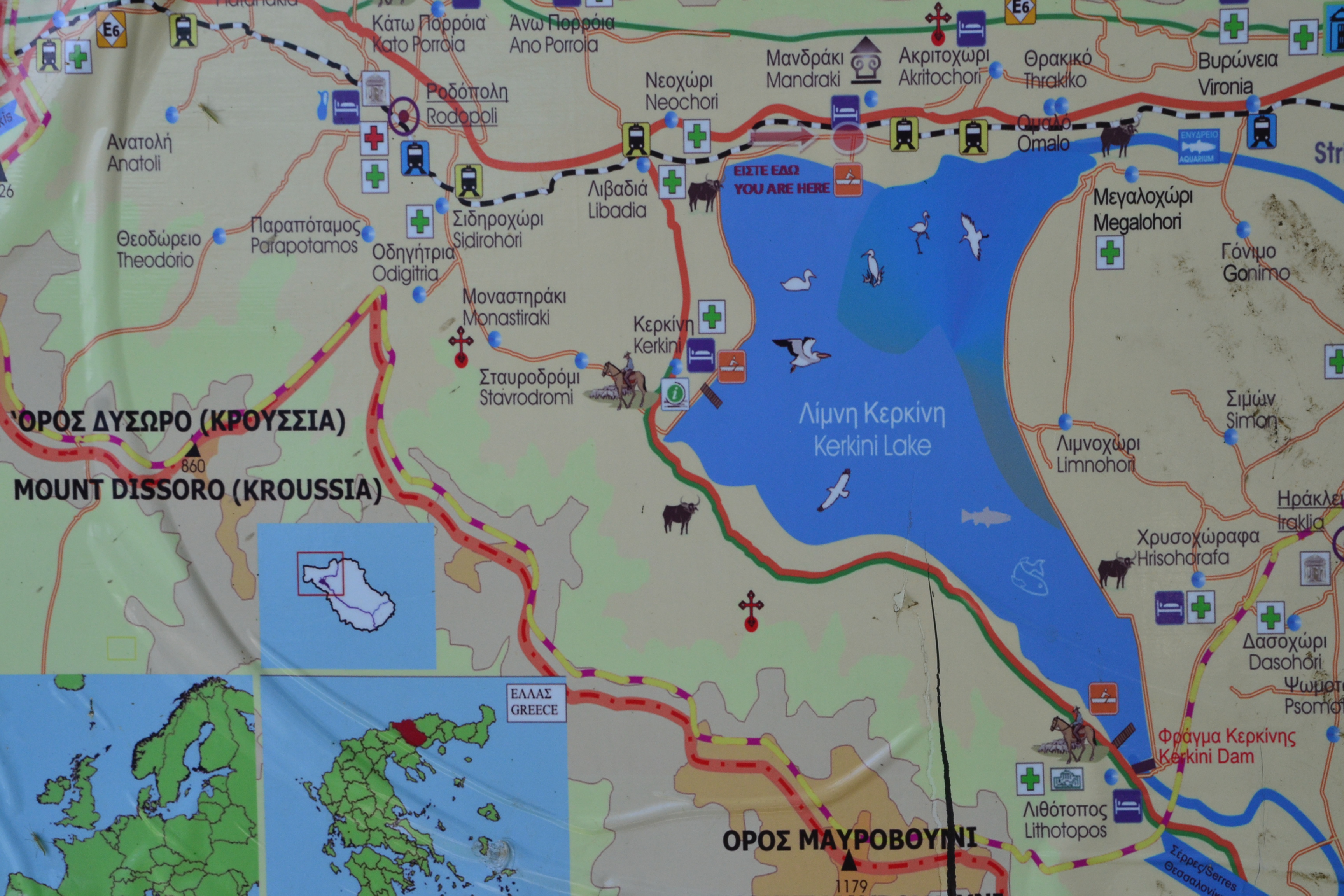
Kerkini, a man-made irrigation reservoir is fed at it’s north-eastern corner by the River Strimonas that flows out of Bulgaria and is dammed at the south-east. We drove a short distance from our base to a spot about half way along the lake’s eastern embankment. As we approached this place a skein of White Pelican flew overhead to one side of our vehicle, the trip’s first lifer. Having seen just that solitary Dalmatian before dozing its time away in Cornwall, I had not appreciated Pelicans as soaring birds until now. They are certainly magnificent. Within 15 minutes of leaving the vehicle I had gained two more lifers: Pygmy Cormorant and Levant Sparrowhawk, both as fly pasts. Phil was especially pleased to have connected with the latter so early in proceedings.
We were in an area of small scale agriculture divided up by drainage ditches and stands of tall trees. As we walked around Great Reed Warbler were keeping up an intermittent rasping from watery hiding places, distant Hoopoe could be heard here and there, and both European Bee-eater and Golden Oriole were going about their own business in their own ways. As throughout this trip, the song of concealed Nightingale filled the air wherever we went. Given such a birds-cape memories of the Algarve countryside in spring came flooding back inside me. At one pool a Penduline Tit was seen carrying food and we located the nest.
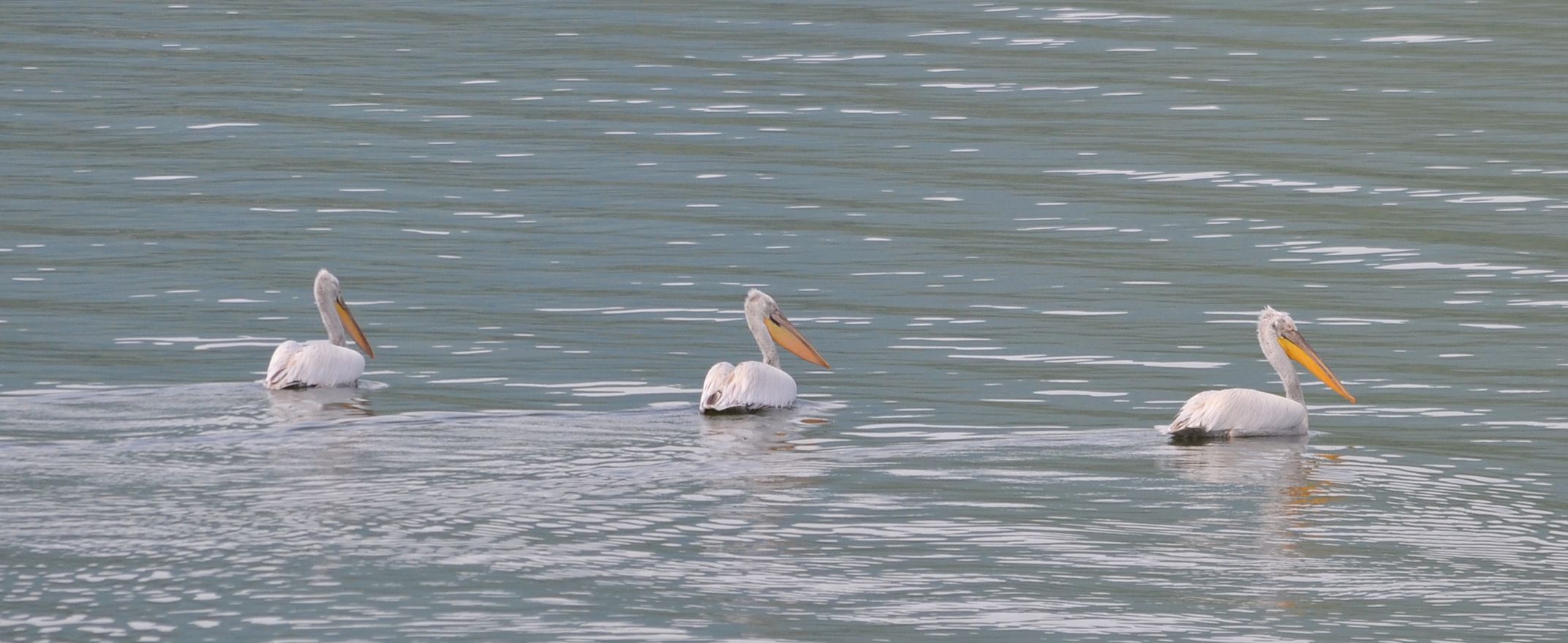
Dalmatian Pelicans (sub-adult)
Returning to the vehicle we drove up onto the embankment then south along it to Lithotopus by the Kerkini Dam, stopping from time to time. More White Pelican passed overhead and further Pygmy Cormorant occupied drainage ditches here and there below. Out on the lake lone Dalmatian Pelican or sometimes twos and threes (pictured above) were seen in places, these being sub-adults with a yellow bill pouch.
Arriving in Lithotopus, we parked to scan the area downstream from the dam. I walked ahead of the group and heard a Reed Warbler-like song coming from scrub, not reeds on both sides of the road. Surely Eastern Olivaceous Warbler, an important lifer since it is missing from my Cyprus list. I had heard the separated western equivalent once but not set eyes on either before. When the group arrived my find was confirmed. We all then observed both individuals moving in and out of cover, the most striking feature being the long, pointed and upheld bill. This south-eastern European breeder was often heard and sometimes seen on many subsequent occasions through the week.
Below the dam a fine array of large water birds served to get us in the mood for the days ahead. Pelicans loiter here, Squacco Heron is frequent; while Spoonbill, Great White Egret and White Stork all come and go. Only my second ever Black Stork was also present at this location today and again when we passed by later in the week. As we walked back to the minibus, a perched Common Clubtail dragonfly was sunning itself at the road side. This had been quite a reconnoitre and a taste of things to come.
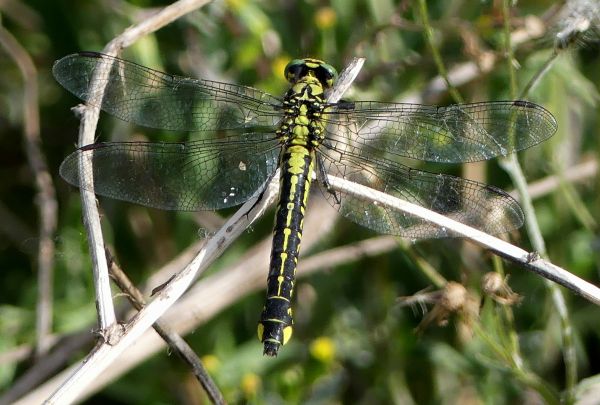
Common Clubtail courtesy of Alan Skull
On Sunday (7th) from the same start point we drove the other way along the eastern embankment and eventually into the lake’s north east corner. Most of the previous day’s birds were present again starting with Penduline Tit. We watched one coming and going from the previously located nest and soon became aware of others in the vicinity. One of them perched at length on an overhead wire, quite a novel way in which to observe a reed dwelling species. PT is plentiful here and these masked bandits’ calls were heard from several locations in the hours ahead.
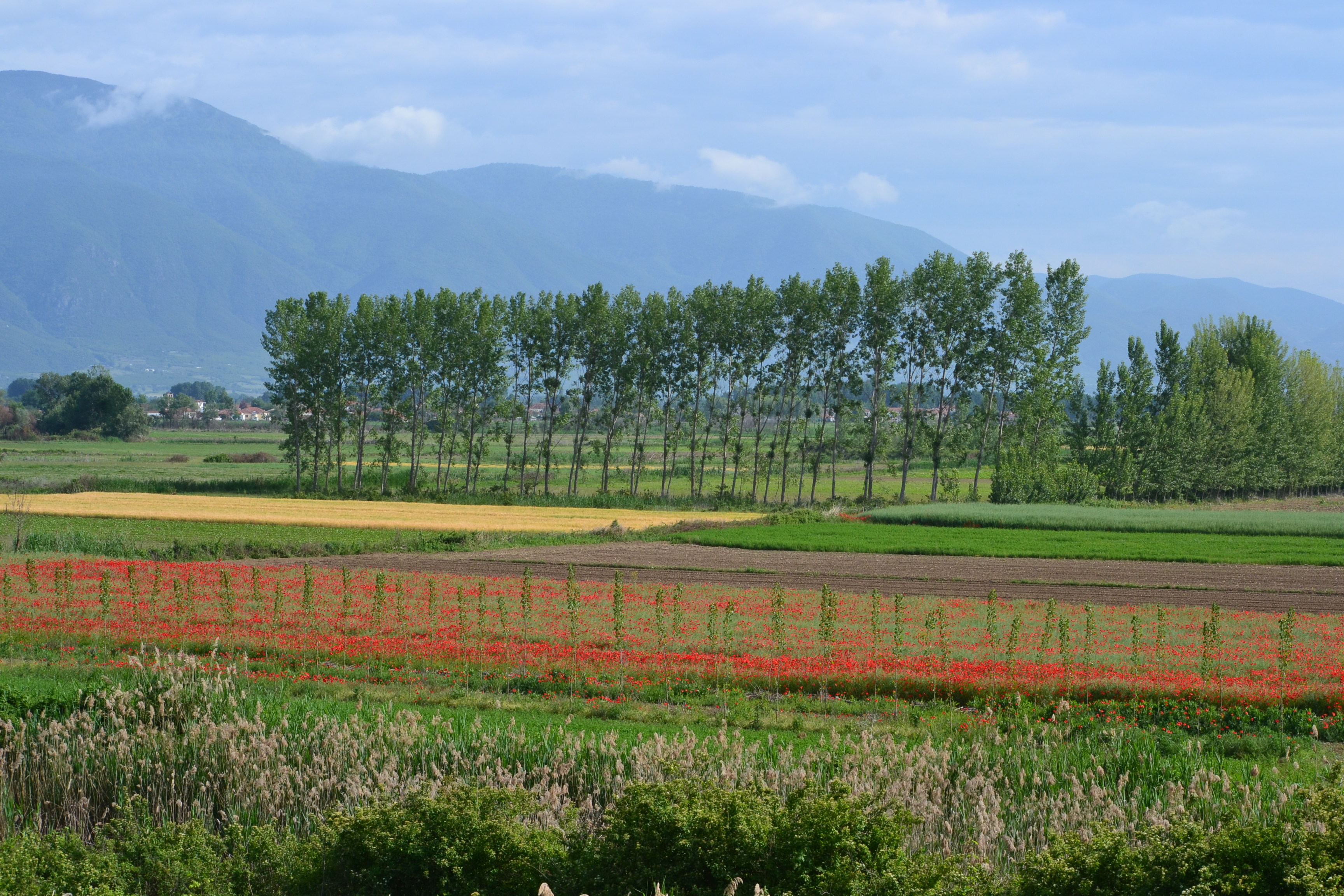
Landscape from Kerkini’s eastern embankment
As we drove northward atop the embankment European Bee-eater kept going up from the grassy slopes below our vehicle. There were dozens of these colourful and charming icons of southern European days in the field here. Two different butcher birds were encountered: a subly-toned Lesser Grey Shrike, this region’s default grey shrike in spring and summer; and also Red-backed Shrike half concealed in shrub tops. Pygmy Cormorant and Black-crowned Night Heron were both observed whiling away their time in a drainage channel. A leggy Tawny Pipit foraged at one side of the track and a Black-headed Wagtail also put in an appearance. Everywhere we turned it seemed there was something to add to this impressive roll call.
On the lake side of the track the hunched, ochre-necked profile of Squacco Heron was a frequent sight. Small numbers of Dalmatian Pelican drifted lazily on the surface in places, and larger concentrations could be seen more distantly. From Kerkini’s north-east corner the lake’s drowned forest stretches westward but at the moment this area is unusually dry. The trip’s first Purple Heron was seen standing way out in the open amongst the other herons and egrets there. And over the water in places the dark shapes of Whiskered Tern stood out amongst the busy Common Tern and gulls.
-

-
Blue Chaser (male)
-

-
Blue Chaser (female)
-

-
Blue Chaser (teneral)
-

-
Blue Chaser (teneral)
In places as we progressed there were concentrations of Scarce or Blue Chaser dragonflies (pictured above) in the track-side vegetation. Amongst the dozens of powder-blue and black males, with their striking blue eyes and black pinch marks on the abdomen from mating, I watched and took pictures of both deep yellow females and orange teneral males for the first time here. So that will be one less odo task off my summer’s agenda in more difficult habitat back in blighty this coming season. I am particularly pleased with these pictures (above) and felt a happy bunny as the group sat down to our picnic lunch at journey’s end.

White-tailed Skimmer (male)

White-tailed Skimmer (female)
In amongst the many Blue Chasers the sunlight kept catching smaller numbers of a sleek, iridescent gold looking dragonfly. These were female White-tailed Skimmer (pictured above), a previously unseen species for me that ranges patchily across south-eastern Europe. In the female (right) the white tail stands out clearly. I didn’t see any blue-toned mature males today, but they were seen in a few different places this week. The left hand image was captured at Mandraki on the north shore on our final day. The white tail is far less apparent, being in males a feature of the anal appendages.
After lunch we drove along the Strimonas valley to check out some abandoned carp pools. On the way we found possibly three Black-headed Bunting (below left) on overhead wires. This is another important lifer that owes that status to being absent from my Cyprus list, since I was there rather too early in 2012 for their season. This is by no means a scarce breeder in south-east Europe, favouring open country with lightly dispersed bushes and trees.

Black-headed Bunting

Levant Sparrowhawk
As we watched the RBB today the trip’s second Levant Sparrowhawk went up, showing to good effect its generally pale colouration except for the sooty wing tips. A migratory raptor, they winter from Egypt east to Iran, and breed in woodlands from the Balkans to southern Russia. My second ever Long-legged Buzzard, a resident species across south-east Europe, was pointed out rather distantly soon after we saw the LS.
Our last location today was a quarry above a village Vironia a little to the lake’s north-east, to seek out Rock Nuthatch. There we came across a courting pair of Masked Shrike, a bird that is right at the western edge of its breeding range in Macedonia. The male’s display behaviour is likewise unusual to witness. I had self found three of this species previously on the slopes of Mount Olympus in Cyprus in April 2012, those being amongst the stand out birding moments of that trip.
Also observed at the Vironia quarry today were Black-eared Wheatear, Red-rumped Swallow and Spotted Flycatcher. Three different raptors, another Honey Buzzard and one each of Osprey and Golden Eagle all put in appearances overhead, this being a reliable location for the last-named. But of Rock Nuthatch at the first attempt there was no sign.
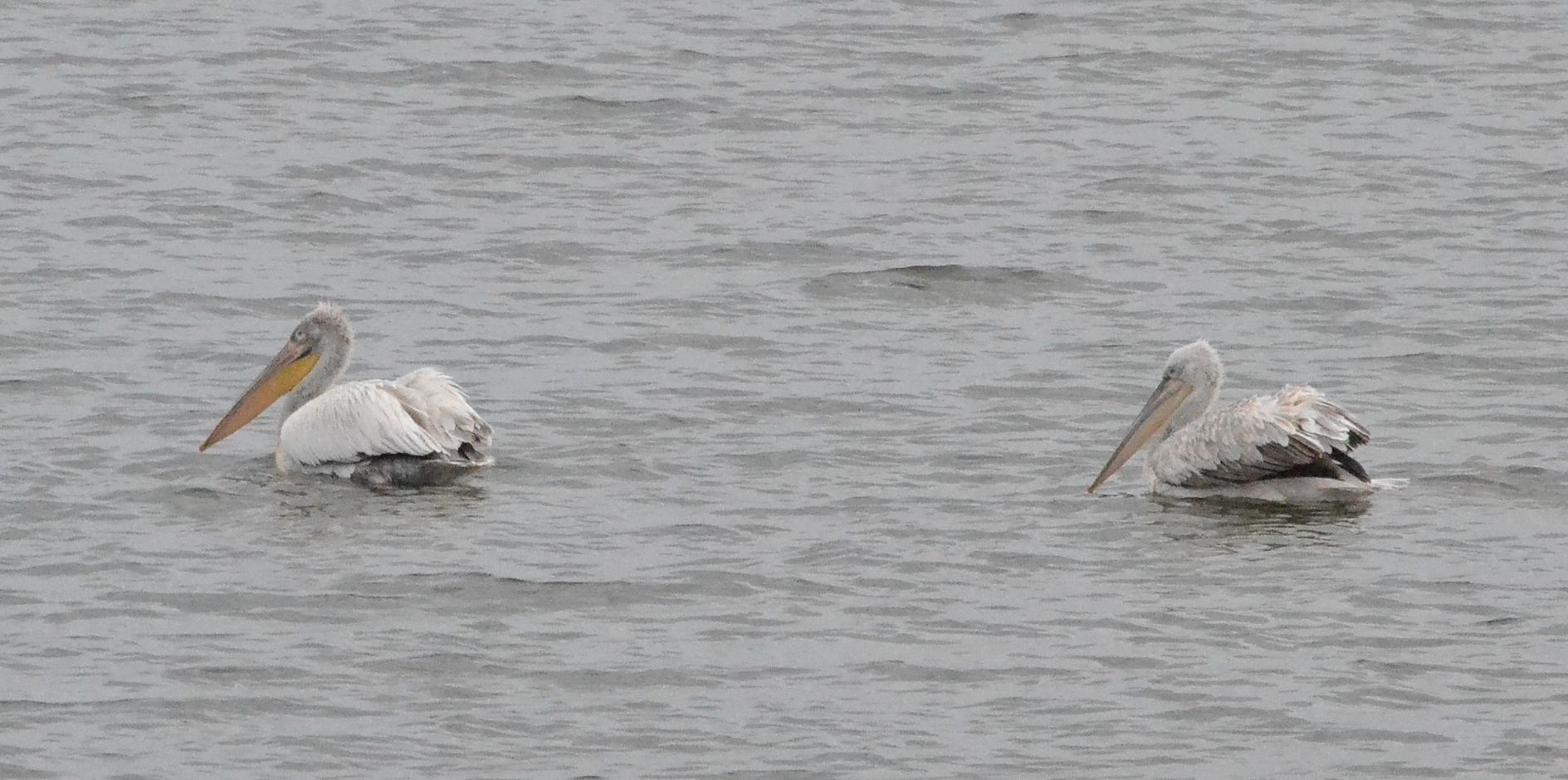
Dalmatian (left) and White Pelican (sub-adults)
On Tuesday (9th) we completed a circuit of Kerkini by road. First we visited another quarry site near Himaros, south-east of the dam where Lesser Spotted and Booted Eagles were amongst the soaring raptors. Next we stopped in Lithotopus to scan the lake from a roadside viewing area. A swimming White Pelican (pictured above) was amongst the Dalmatians here. I was surprised by how difficult the two species were to tell apart on the water. The sub-adult birds we observed are both buffish grey above and dirty white below. Dalmatian has a shaggy mane on the back of its neck while White has more of a crest, as well as a pinkish face and more beady eye.
But in flight identification is much easier since White shows a lot more black on the underwings, in roughly the same proportion as White Stork. In adults the flight feathers are black and the coverts white, while for Dalmatian the flight feathers are grey. From Lithotopus we took the road that runs parallel with the south-western shore towards the village of Kerkini. Along that road we walked a track up into the Mavrovouni hills to the west that will be the subject of a separate post.

Squacco Heron and friend
Stopping for lunch in Kerkini village we headed out to the fishing jetty from where boat trips also depart. There a few more Pelicans were loitering out on the water and both Squacco (pictured above) and Night Heron stood sentinel amongst their own allies at the water’s edge. I was amused by one Dalmatian that came in to land on the surface with the profile of a jumbo jet, not having seen this before. Fortunately a gull that was under the big bird’s landing path did see it eventually. There was also a colony of Common Tern amongst which Whiskered came and went.
The weather was still deteriorating so the decision was made to cancel our afternoon boat trip. Guess what, by our scheduled departure of 2:30pm the cloud dispersed and glorious sunshine prevailed for the rest of the afternoon. Now we drove on to what is known as Mandraki Harbour on the northern shore. Here a track leads down to a causeway out into the lake from where breeding structures provided for the Pelicans can be viewed. To one side of the causeway is a large reed bed and on the other Kerkini’s drowned forest stretches into the middle distance (pictured below).
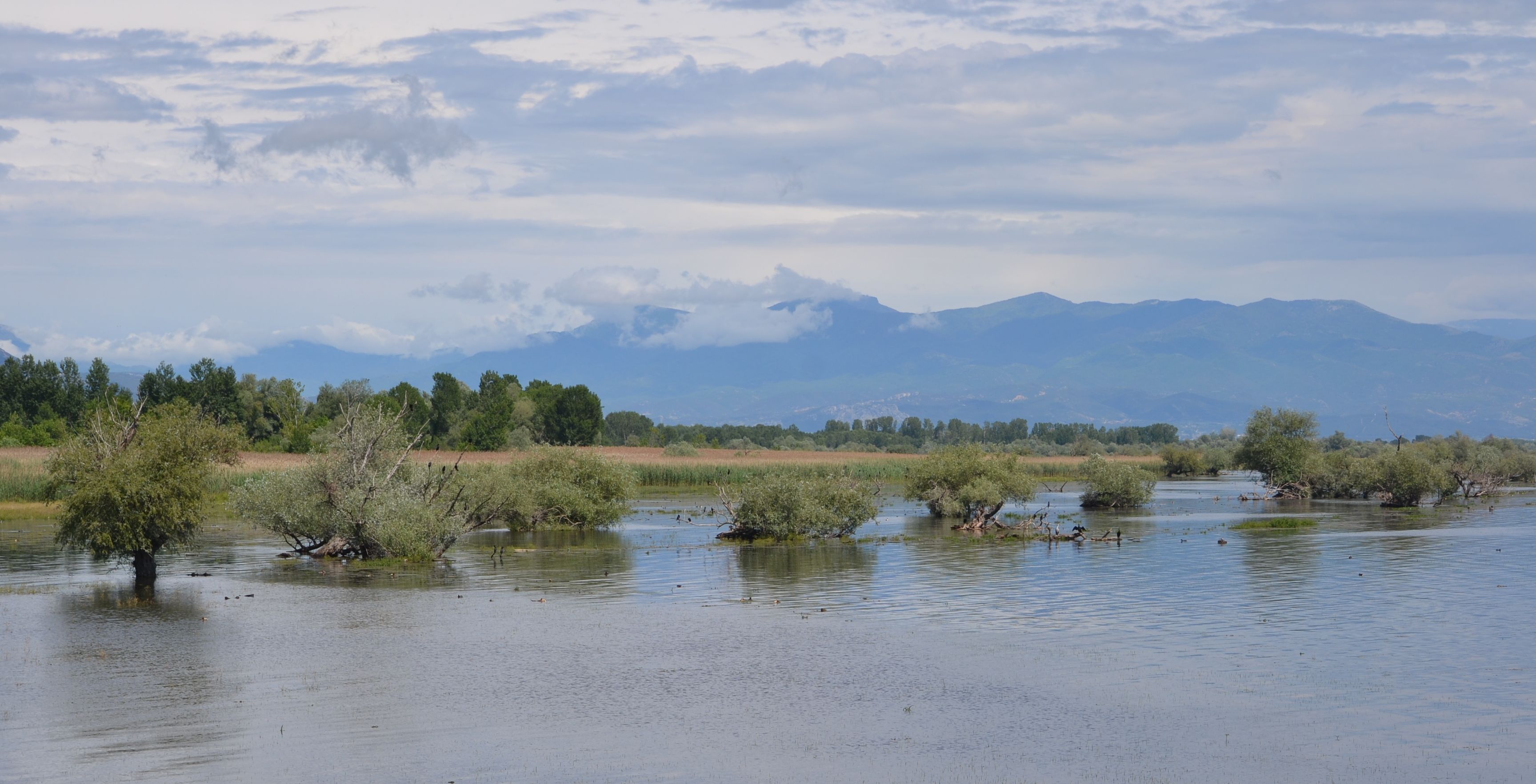
The view from Mandraki Harbour
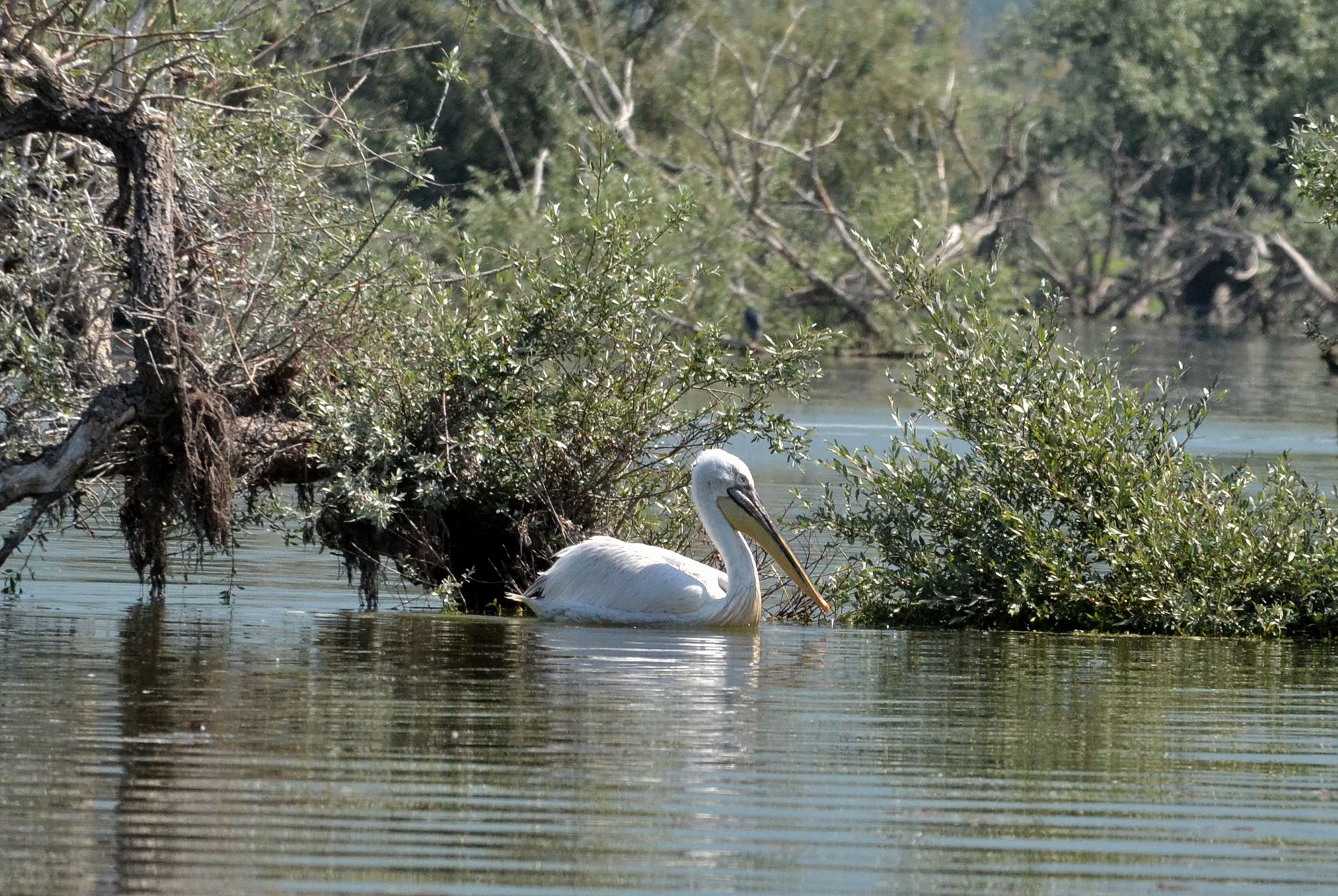
Dalmatian Pelican
Kerkini is the most productive lake for fish in all of Greece, as is evidenced by the numbers of Pelicans and Cormorants here. The site and its associated breeding programme has been key to the recovery of Dalmatian Pelican as a European breeding species. Prior to the provision of the breeding islands the most DP chicks raised in one season was around 130, but that number rose to more than 200 in 2016. Earlier wooden structures had been vulnerable to removal by local fishermen.

Pygmy Cormorant
In the drowned forest beyond Mandraki groups of Pygmy Cormorant (pictured above)were sunning themselves in the trees, their brown heads and small bills being readily apparent. This localised south-east European breeder favours lakes and rivers with big reed beds, often associating with Herons and Egrets. There are between two and three thousand of the Coot-sized PC at Kerkini. When seen in proximity with Greater Cormorant, that number 25k here, the size difference is striking.
Out in the reed bed Great Reed Warbler belted out their strident song from reed mace heads. We picked out the trip’s second Black Stork soaring against a hillside, rising higher and higher on a thermal prior to it’s onward departure. Then a Little Bittern settled into a marshy area beside the causeway, the second that we saw on this day .

Great Reed Warbler

Greek Marsh Frog

European Pond Terrapin
I also acquired some froggy pictures for the trip here. There must have been hundreds even thousands of Greek Marsh Frog out in the water lilies and marshy lake margins. From time to time seeming Mexican waves of their chuckling, cackling chorus would erupt from all around us before fading again with a little flourish at the end. European Pond Terrapin was also present.
We returned home via Vironia as we had a day earlier. Between the village and the Strimonas just to the south two tracks are worth a visit. On the 8th we explored the first of these along a woodland edge where an array of insects were flying in the early evening sunshine. Green-eyed Hawker dragonfly and Southern White Admiral butterfly were both new for the trip here and the most numerous odo was once again Blue Chaser. The second track skirts a marshy site. There (on 9th) an ageing Eastern Festoon was amongst the butterfly highlights. I also came across another female Blue Chaser dragonfly and also a few female Scarlet Darter.

Faded Eastern Festoon

Scarlet Darter (fem)
On the road between that location and our base Red-footed Falcon were seen on both days. On 8th we had first sighted two males in a field to one side, then my first female of that species perched on overhead wires. Unlike the males who soon flew off she was very tolerant of our presence, and having the front passenger seat at that moment I didn’t waste the photo opportunity. On 9th there were five males and two females, all foraging for insects in roadside fields. This small raptor is known to migrate in groups in order to maximise feeding opportunities before dispersing.

Red-footed Falcon (fem)
It had been an unsettled weather pattern all week but finally on Thursday (11th) conditions were right for our boat trip on Lake Kerkini. At 10am in bright sunshine we met our host at Kerkini village, where he keeps a boat. We had heard horror stories over the preceding days about the soakings endured by some of Nicos’ clients. But the torrential downpours had also been a blessing since the water level would now be a little higher, allowing better access to the drowned forest area where the best birding experiences are to be had.
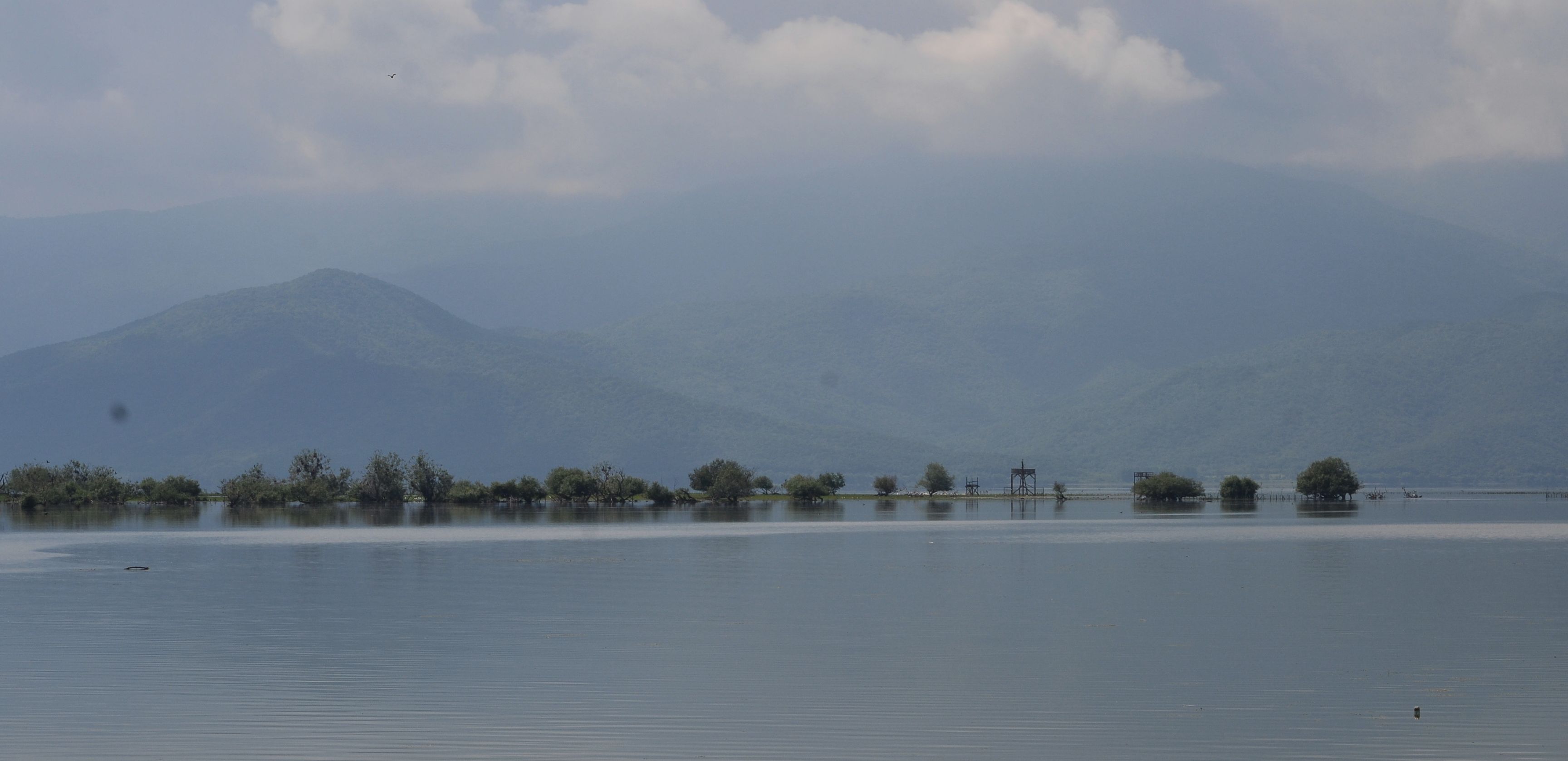
Kerkini mood shot
We set out across the perfectly calm lake surface towards the north-east corner, crossing paths with loafing Pelicans here and there and many more Great Crested Grebe. As we approached the drowned forest some Black-necked Grebe could also be picked out in the distance. All three marsh terns are present here and White-winged Black Tern made a number of fly pasts, showing the two tone patterns and black saddle of their breeding plumage to good effect. But it was the Whiskered Tern (pictured below) that provided the best photo opportunities, arrayed on perches extending out of the water.

Whistered Tern and Black-headed Gulls

Whistered Tern
We had reached the drowned forest and now moved slowly into the trees in which a hefty chunk of Kerkini’s Great Cormorant population was nesting. In amongst the tree borne colonies were some Pygmy Cormorant and an array of herons and Spoonbill all raising young on countless nests. This wildlife spectacle can only be enjoyed from the water in a boat. Because the lake is so shallow at this end, a rise or fall of just half a metre can mean the difference between viewing the birds at a few metres or everything being up to a kilometre away.

Nesting Great Cormorant

Black-crowned Night Heron

Spoonbill

Kerkini’s drowned forest
I particularly liked the Black-crowned Night Heron that here at Kerkini do not seem to have read the script that they are meant to be night herons, roosting half concealed in cover through the day then emerging at dusk. This (below) has to be my bird image of the week.
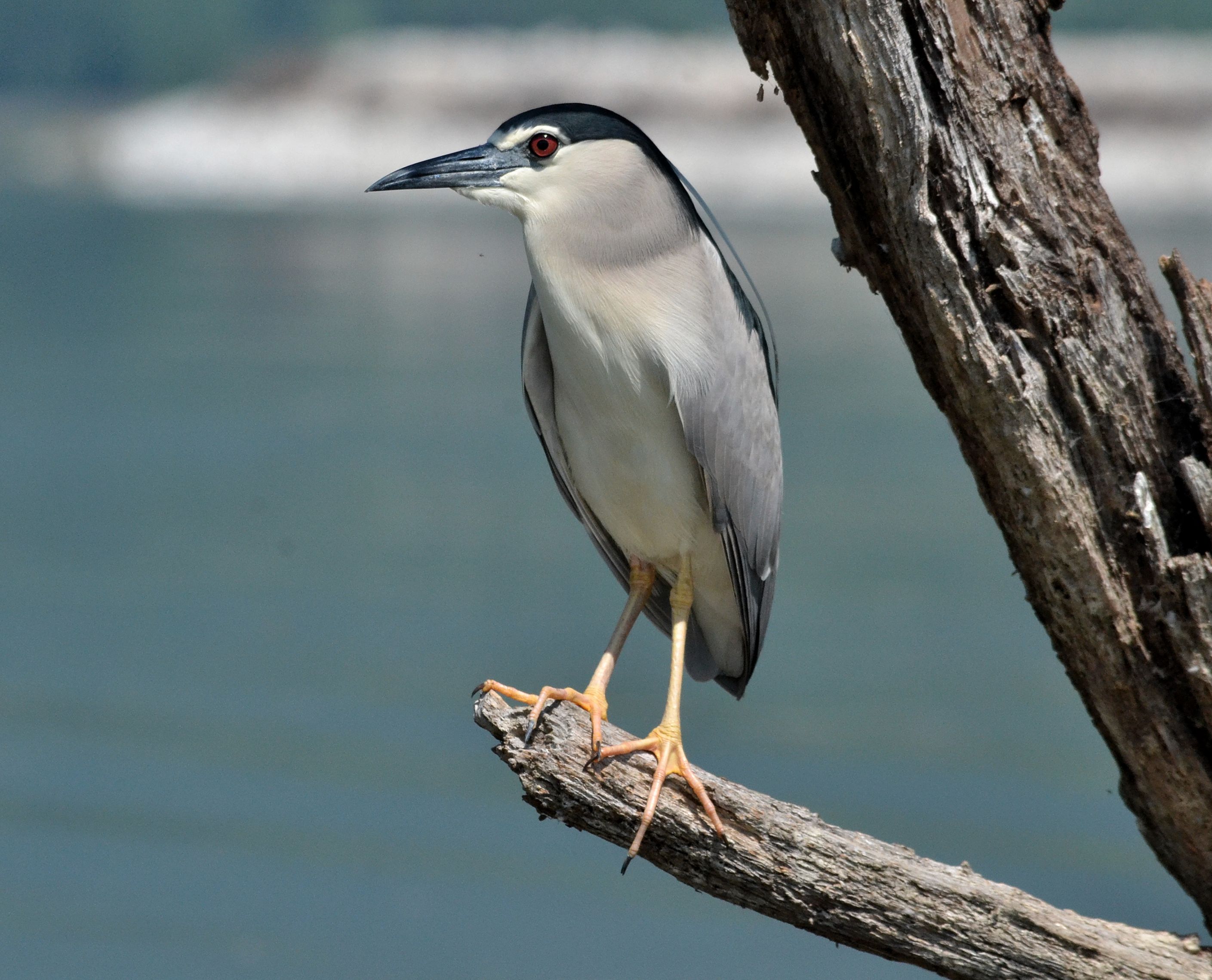
Dreamy Black-crowned Night Heron – just look at lovely me!
Lastly we drifted at appropriate distance past the Pelican nesting structures. From Mandraki I had thought the new, specially created islands were covered in birds but closer to I could see the structure was composed of white rocks with Pelicans mostly on the top. Dalmatian Pelican is a globally endangered species that has suffered dramatic population declines from wetland drainage and persecution. They normally require secluded islands on which to breed, so prior to the early years of this century they had not done so here.
After the first wooden platforms were provided from 2002 these were immediately accepted, the result being the first recorded expansion of the Dalmatian’s breeding range in more than 150 years. Kerkini’s breeding population currently numbers around 250 pairs of Dalmatian with maybe another 100 birds present in total. In 2016 White Pelican bred successfully for the first time with 11 pairs raising six chicks. Up to 2000 of the latter pass through the lake from March to September.
This slideshow requires JavaScript.
Late in the afternoon of my final day in Macedonia, we returned to Mandraki to say our farewells to Lake Kerkini. This time we had the causeway almost to ourselves. I caught sight of two, then three, then four Dalmatian Pelican approaching from afar and photographed them as they came nearer. I regret not managing better Pelican pictures on this trip, but with it being the height of the breeding season the need to minimise disturbance meant that we just did not get close enough. Most of the birds encountered were hence non-breeding sub-adults.
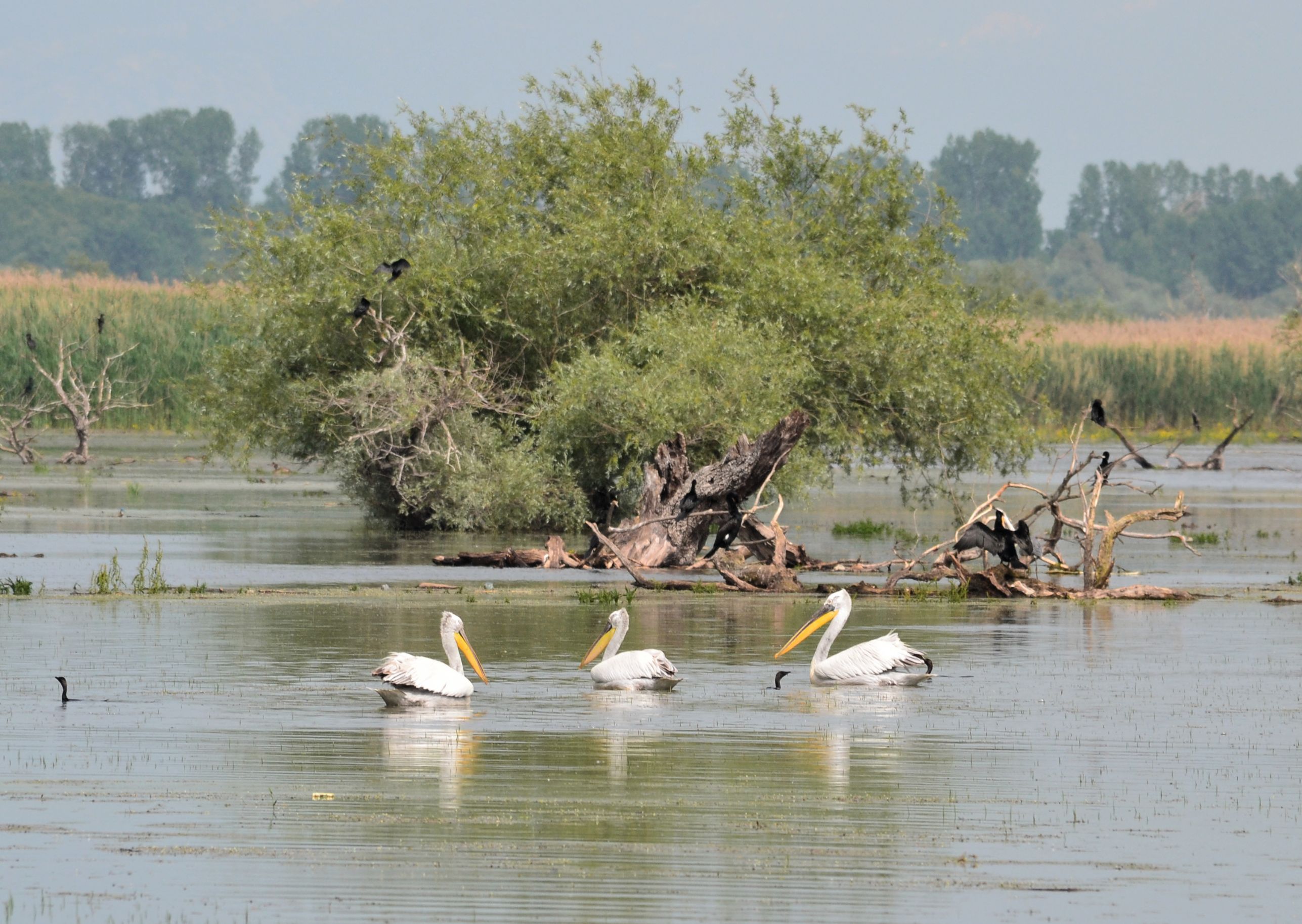
Dalmatian Pelican amongst Pygmy Cormorant
As the week had started with an unusually showy Penduline Tit so it ended here with another that, like the local Night Herons had not read the script. We watched this particular individual feeding in the top of a Weeping Willow. Squacco Heron were all around us and provided some photo opportunities of their own. I have at no time seen so many of this charismatic small heron as this week around such an amazing wetland.

Squacco Heron
At last, possibly sensing our imminent departure the surrounding marsh frogs treated us to one final and spectacular serenade … and with that we left all this behind. Lake Kerkini had not disappointed and I will carry its memories for a long time. So the story goes … this is a tale that’s just been told* (*Lyric © S Hudson / M Kennedy).
But other major wildlife sites in northern Greece are not so sympathetically managed for birds as Lake Kerkini. In 2008 Birdwing (Bird Watching In Northern Greece) was set up by British birder Steve Mills and his partner Hilary Koll to raise awareness of issues impacting on birds in Greece, and raise funds for conservation and restoration of habitat. The organisation also aims to bring more eco-tourists to important bird areas, provide education for children and local adults about birds, and to lobby political decision makers. Steve is also the author of the region’s definitive birding guide: Birdwatching in Northern Greece that I invested in a copy of before leaving Kerkini. All proceeds from sales of the book go directly to supporting Birdwing’s work. Donations may also be made via the web site.
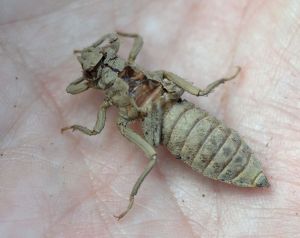
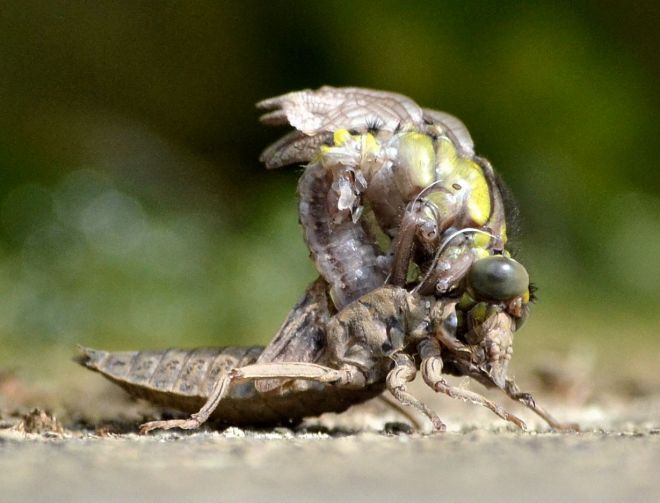
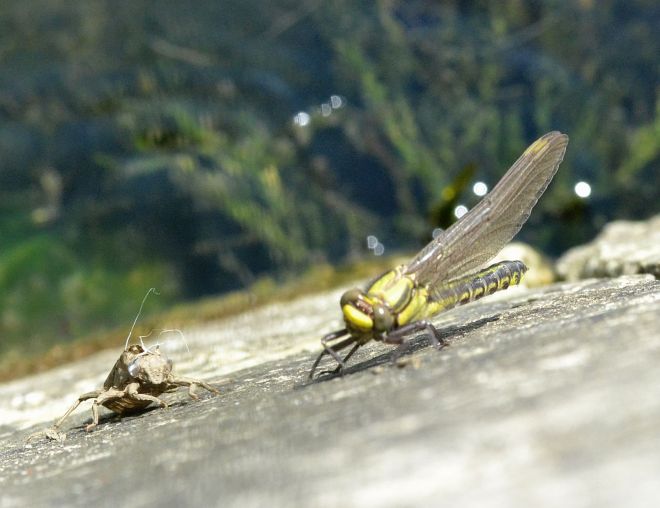









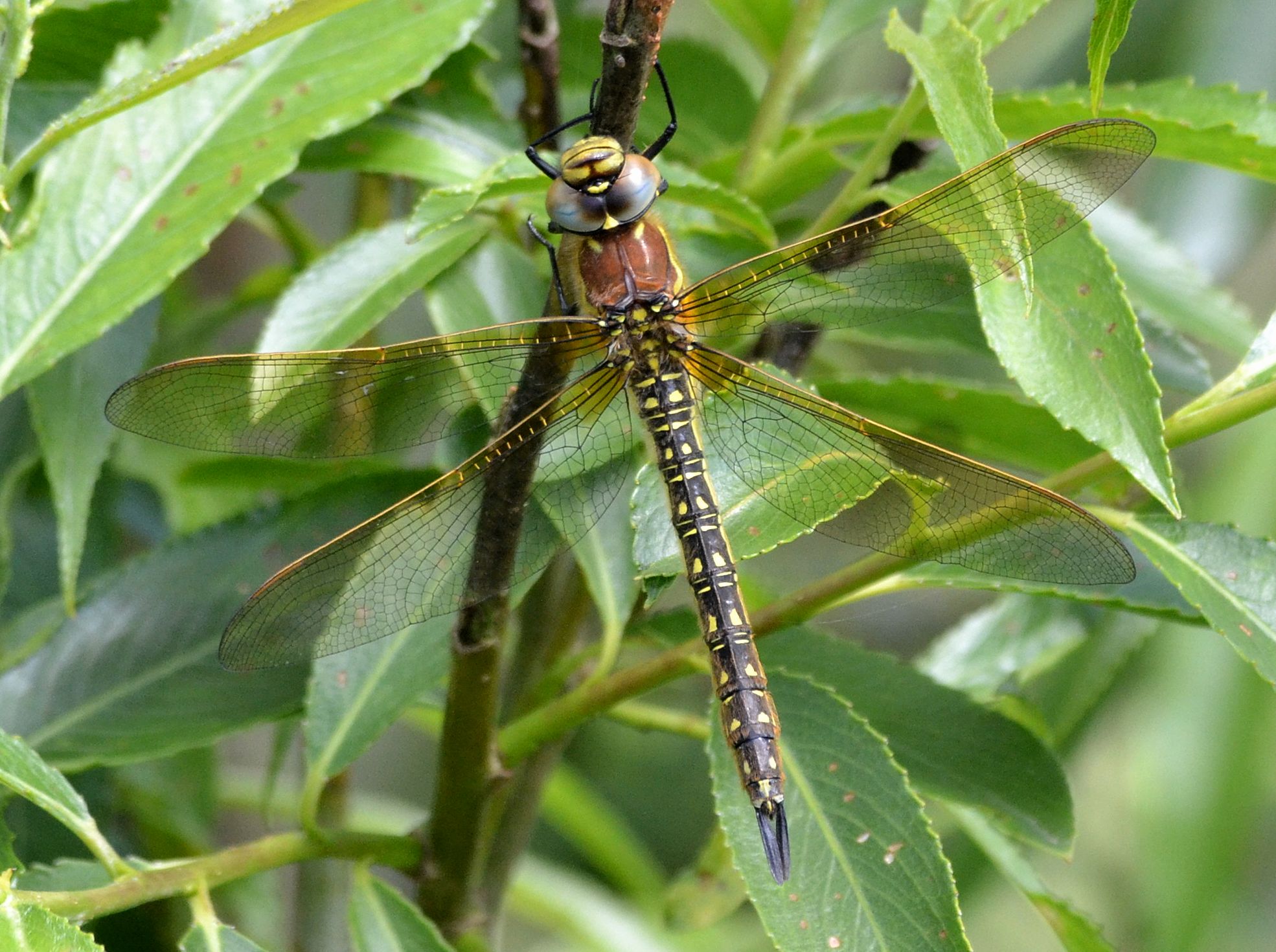


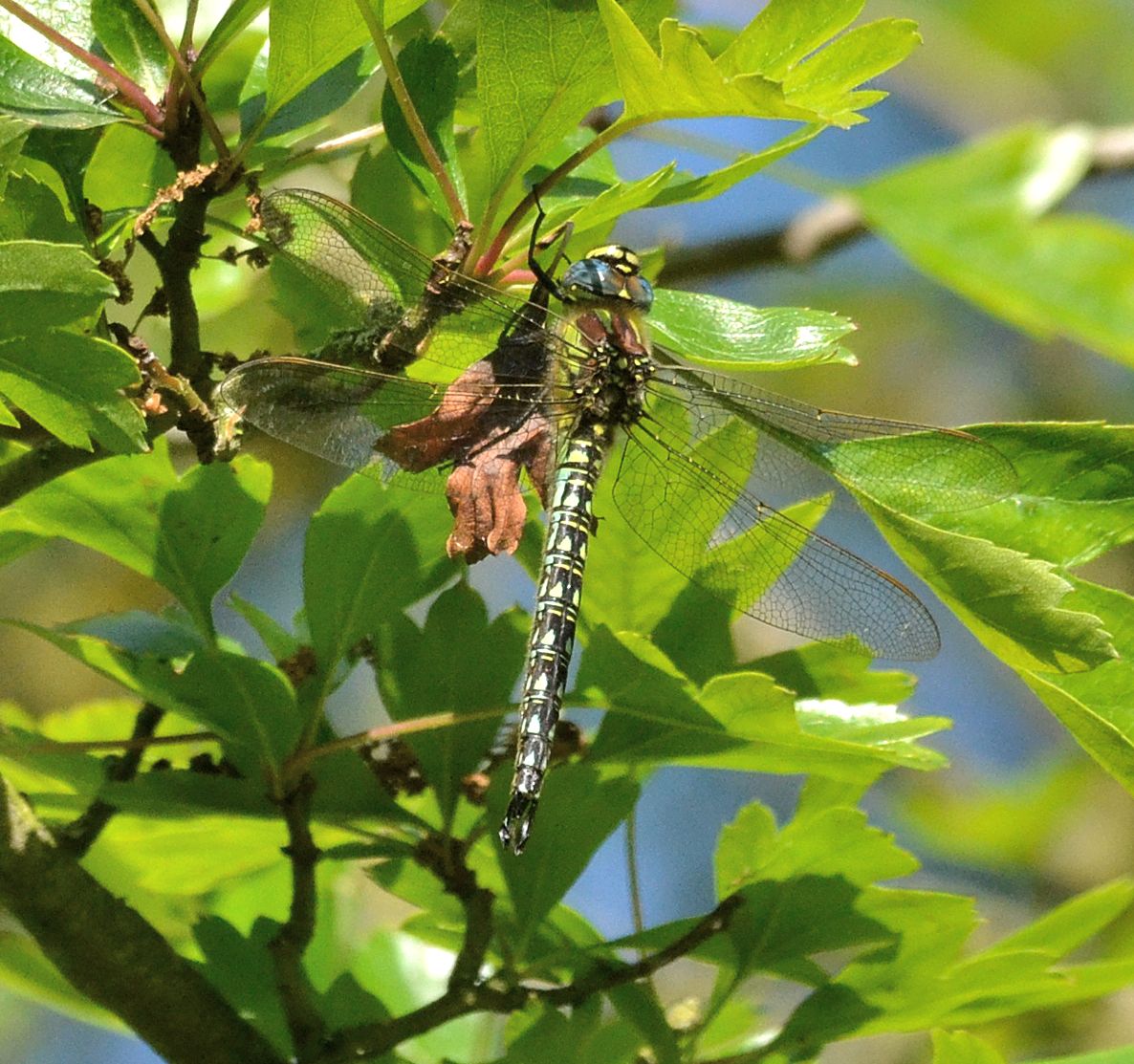
















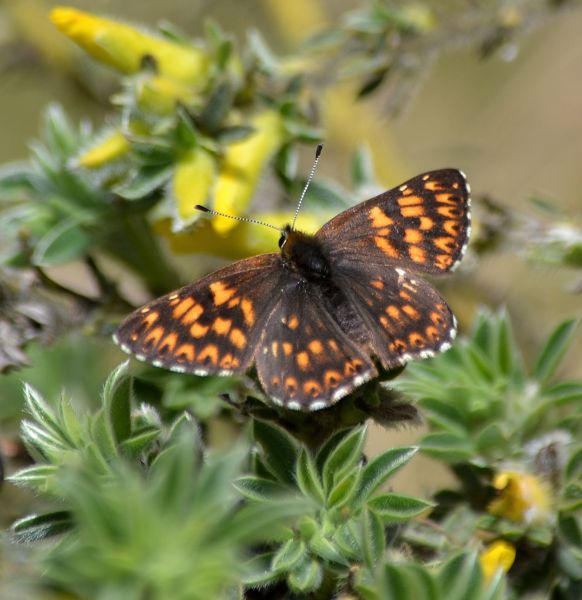





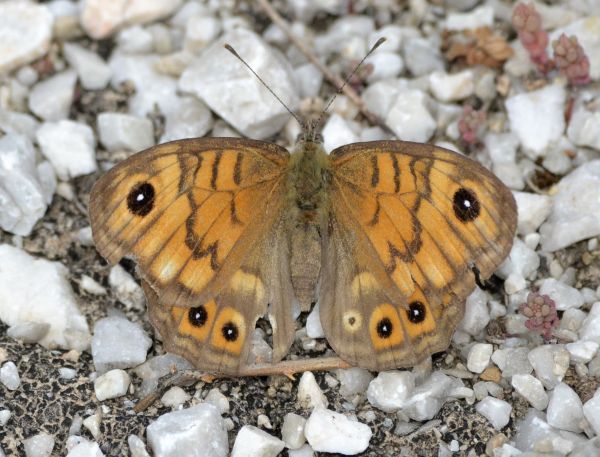


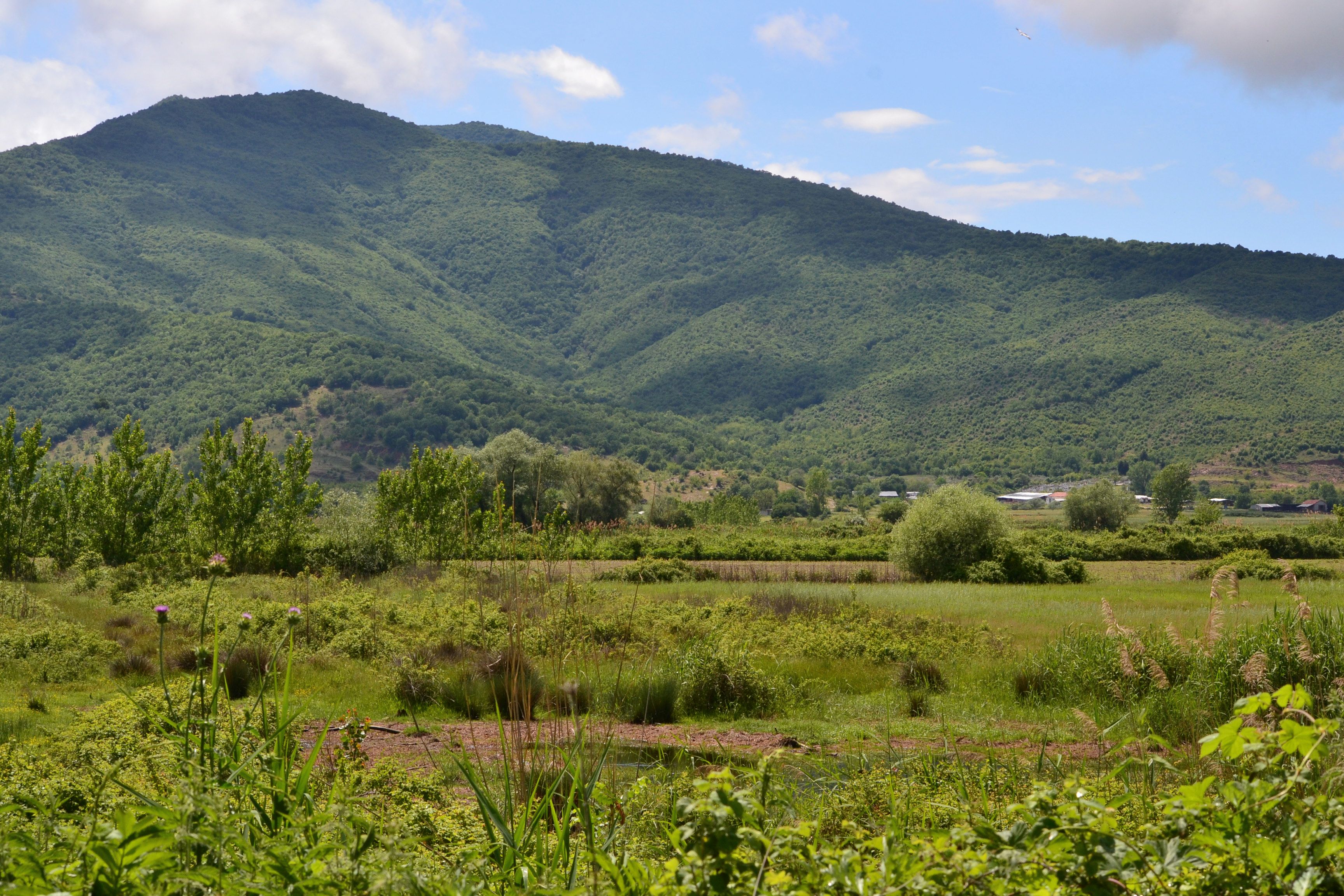







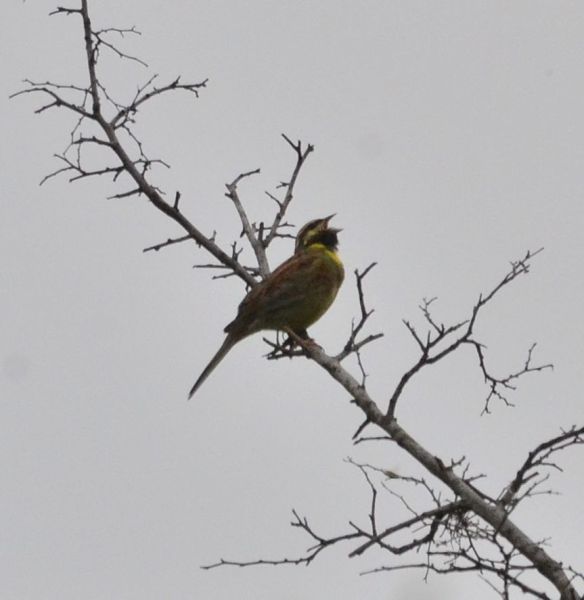



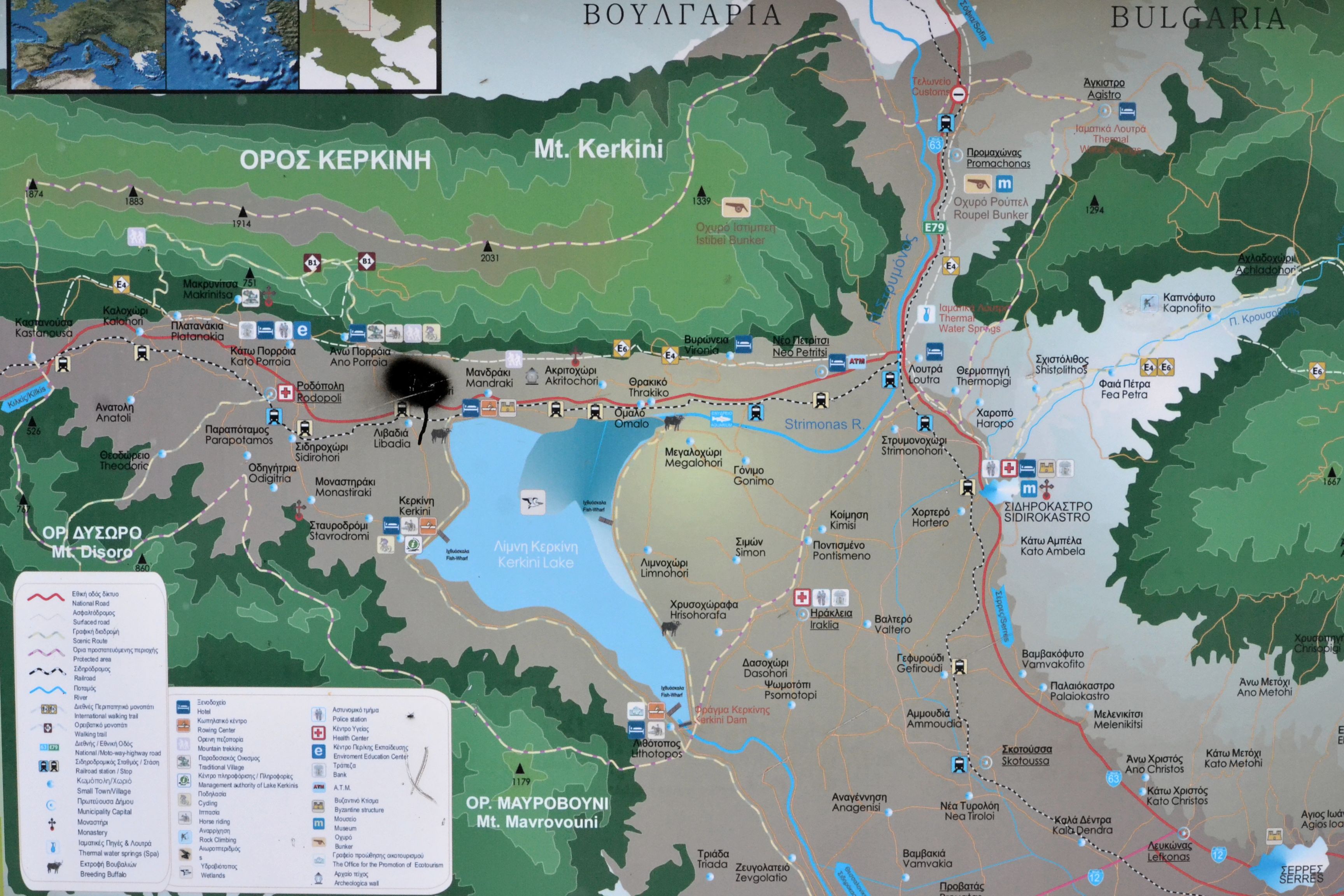 The huge, man-made reservoir of Lake Kerkini was created by flooding an area of former marshland lying between the Belles Mountains on the Greece / Bulgaria border in the north, and the Mavrovouni Mountains to the south-west. On three separate days during the Naturetrek tour I joined here our group visited a number of locations in the northern range that is split in two by the River Strimonas valley.
The huge, man-made reservoir of Lake Kerkini was created by flooding an area of former marshland lying between the Belles Mountains on the Greece / Bulgaria border in the north, and the Mavrovouni Mountains to the south-west. On three separate days during the Naturetrek tour I joined here our group visited a number of locations in the northern range that is split in two by the River Strimonas valley.